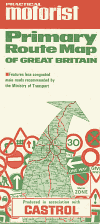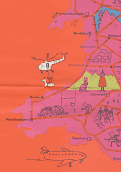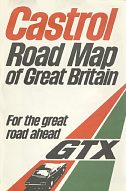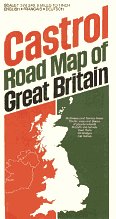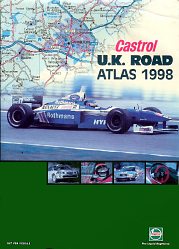CASTROL
Brief History
Charles Cheers Wakefield started selling lubricants in 1899, and in 1909 introduced the brand name 'Castrol', as the oil was a blend of Castor oil and mineral oil. (Cheers was not a nickname, but his mother's maiden name.) Castrol became Britain's leading brand of lubricants in the 1930s, partly because it was not tied to a petrol company, so its products could be sold by almost all UK service stations, but also due to a clever marketing strategy. Castrol supplied oils to many racing cars, aircraft (including the first transatlantic flight by Alcock & Brown) and as many as 21 world land speed records. Technical advances included adding a detergent to oils in the 1930s and the world's first semi-synthetic oil in 1953. International expansion followed, eventually leading to its purchase by Burmah in 1966. Later European expansion included buying the German-based regional operations of Veedol from Getty Oil in the 1970s, and Optimol in 1990. Along with the rest of Burmah, Castrol was acquired by BP in 2000 and it remains one of the top six lubricant brands world-wide, with operations in over 140 countries and a particular strength in some of the developing markets, such as Vietnam.
Maps
|
|
|
|
|
|
The oldest map known from the UK is an issue sponsored by Castrol and given away with "Practical Motorist" magazine in 1966. This used Castrol's red and green colour scheme but was printed on cheap magazine quality paper. In the following year, a very strange map, bearing a cover price of 5/- (at a time when Esso maps still sold for 1/-) was produced by the Egon Ronay food guide in association with Castrol. Selected hotels and restaurants from the 3,028 listed in the Egon Ronay-BMC 1967 guide were marked onto a primitive map produced in two tones of red. Only main A roads were marked, although there were numerous small cartoons across the map, which was designed by Walter Truman-Cox and Michael Peyton. |
|
| Later Castrol maps were almost certainly produced only for giving away with gallon cans (5 litres) of oil. A 1976 edition (above centre right) promoting its GTX oil was printed on strong paper, but for the externally identical editions of 1986 and 1988 (above far right) card covers were used. All of these later maps were produced by John Bartholomew at the unusual scale of 9 miles to the inch (1:570,240). |
|
Maps: outside UKThis 1969/74 Castrol map of France (right) has identical front and rear covers, except for the omission of the name Castrol on the rear; neither cover states that it contains a map of France inside. (Some copies have a distributor's details overprinted on the rear where it would otherwise say Castrol.) Recta-Foldex prepared the map, which was used for several years and by using a small scale is printed on one side of the paper only, but marks principal locations selling Castrol oils. |
|
|
|
Castrol also had a moderately strong position in Germany, and in 1961 or 1962 sold this map of Southern Germany. Specially produced for them by Falk at 1:650,000 it was folded conventionally, unlike most Falk-plans of the period. The borders carried the repeated message (in English) "CASTROL MOTOR OIL • MASTERPIECE IN OILS", but the rear cover and an inside rear panel carried advertising for Castrol oils in German. Most of the rear was given over to 11 district maps of the main cities. As the cover carried a price of DM0,80, the map was probably designed to be sold by free or minor brand filling stations that did not issue maps of their own. |
The next pages look at Duckham's maps, and then - mainly German maps - from Burmah-Castrol's other lubricants brands: Optimol and Veedol.
Text and layout © Ian Byrne, 1999-2006
All original copyrights in logos and map extracts and images are acknowledged and images are included on this site for identification purposes only.

